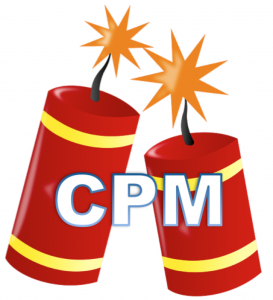 Header Bidding: Why can’t header bidding be done server side?
Header Bidding: Why can’t header bidding be done server side?
What’s the reason all header bidding implementations are client side, can’t the same be achieved server side? So instead of a waterfall do an auction by getting pre bids from all the demand partners? What would be the down side to that?
This question was asked on Quora, below is my answer.
Header bidding is designed to expose the clearing price of exchange and SSP auctions so that a publisher’s technology can make an informed decision about which ad to serve. These prices are pitted against each other as well as the publisher’s demand from their primary ad server, usually Doubleclick.
In a perfect world all of this would be done on the server side. The primary benefits would be reduced payload size and lower latency in the browser. It’s not likely to happen, however. It would require SSPs, exchanges and ad servers to figure out how to work with each other in a server-to-server relationship. These companies tend to be competitors; count that as a business reason that will prevent a server side solution. Read more



 “In online advertising, how can I predict/forecast the traffic (number of requests) for a day ?
“In online advertising, how can I predict/forecast the traffic (number of requests) for a day ? Every impression is put out to bid, along with that a user identifier is passed. This gives the buyers the information they need to make a decision, “Do they buy or not?” If the buying platform decides to track the user and build a profile on that user’s behavior, there’s little the publisher can do from a technology perspective. The shorthand for this misappropriation of information is Data Leakage.
Every impression is put out to bid, along with that a user identifier is passed. This gives the buyers the information they need to make a decision, “Do they buy or not?” If the buying platform decides to track the user and build a profile on that user’s behavior, there’s little the publisher can do from a technology perspective. The shorthand for this misappropriation of information is Data Leakage. For a CPA deal they’re estimating how many acquisitions they can send to the buyer for every thousand ad views. For CPC, how many clicks per thousand ad views. They’re boiling it down to a CPM because that’s how they can compare the deals. It works like this all the way up and down the funnel.
For a CPA deal they’re estimating how many acquisitions they can send to the buyer for every thousand ad views. For CPC, how many clicks per thousand ad views. They’re boiling it down to a CPM because that’s how they can compare the deals. It works like this all the way up and down the funnel. Search engine optimization (SEO) consists, at the simplest level, of three things: knowing your target keywords, optimizing your content around those keywords and building inbound links from relevant external pages. That doesn’t sound so simple, does it. I’ll break down these three points and expose my experience optimizing my wife’s site for her
Search engine optimization (SEO) consists, at the simplest level, of three things: knowing your target keywords, optimizing your content around those keywords and building inbound links from relevant external pages. That doesn’t sound so simple, does it. I’ll break down these three points and expose my experience optimizing my wife’s site for her 
